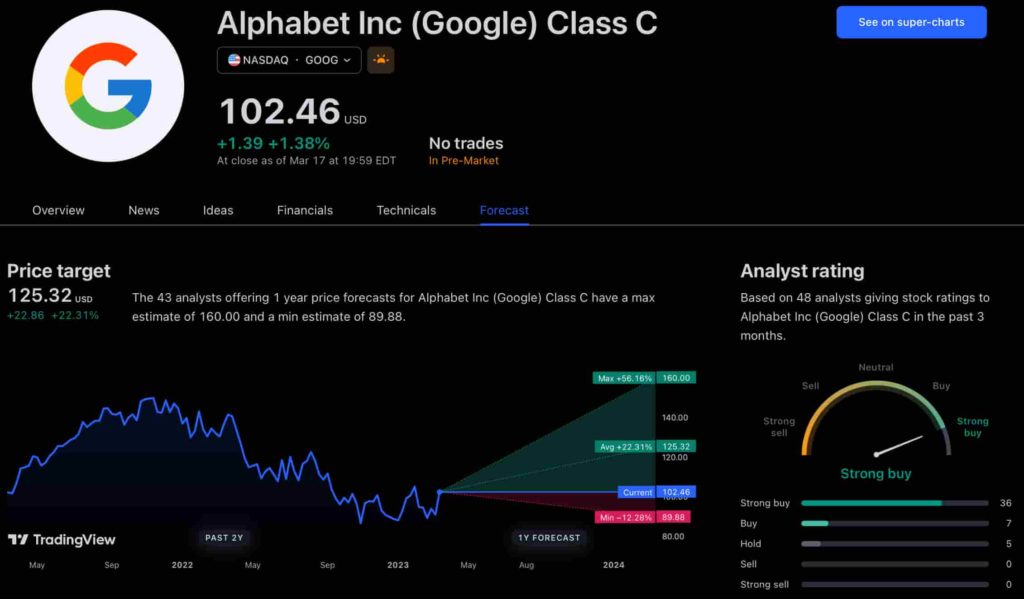The new app is called watchGPT and as I tipped off already, it gives you access to ChatGPT from your Apple Watch. Now the $10,000 question (or more accurately the $3.99 question, as that is the one-time cost of the app) is why having ChatGPT on your wrist is remotely necessary, so let’s dive into what exactly the app can do.
NEWS
Google Analytics 4 Backlash: GA4 “Sucks” and is “Horrible” via @sejournal, @martinibuster

Twitter has been on a low boil for weeks as many users across the search marketing world expressed their extreme displeasure with Google Analytics 4 (GA4). While there are some positive comments, the many negative comments come from search marketing professionals who one would expect to be brand ambassadors of GA4 and not their most passionate critics.
GA4 is Difficult to Use
A common complaint about GA4 is that it is difficult to use. Some search marketers noted that GA4 seems geared for use by enterprise level users more than smaller businesses.
Dave Davies (@beanstalkim) is a search marketing expert and co-host of the Webcology Search Marketing podcast, a person one would expect to be a brand evangelist for Google’s products but even Dave was tweeting his negative experience with GA4.
It was startling to see his recent tweet proclaiming that “GA4 sucks” because the user interface is not intuitive and is difficult to use.
Dave noted that commonly used features are buried within the user interface as if purposely making it difficult to access.
Advertisement
Continue Reading Below
Dear Google.
GA4 sucks.
I’m not sure who there thought, “Let’s make a lot of the important data hard to access, and unintuitive to SEOs let alone regular business owners.” but please fire them and put it away with authorship and Google+ and let’s move on.— Dave Davies (@beanstalkim) June 23, 2021
Another search marketer Called GA4 HORRIBLE (in caps) and complained that basic features were now difficult to access, mirroring Dave Davie’s observation about the unintuitive user interface.
Website owners, is it just me or is the new GA4 @googleanalytics just HORRIBLE? It’s like it’s designed only for retail sites or something, very hard to get the basic info that I used to rely on… Think I’ll switch back! Awful!
— Trevor Long (@trevorlong) June 23, 2021
Another search marketer agreed that the word “horrible” accurately described the new Google Analytics 4.
The marketer wished they hadn’t wasted so much time trying to familiarize themselves with the poor user interface.
It was also noted that third party add-ons still don’t work.
Advertisement
Continue Reading Below
GA4 is Described as Horrible
It is horrible. I wish I switched back earlier. Tried to get used to the interface and new menus for months. Still can’t get around them + some third party services don’t work with GA4
— Michael Aulia 🇦🇺 (@michaelaulia) June 23, 2021
GA4 is Described as “Awful”
I was just having this conversation with someone. It’s awful! Try tracking events with GTM and GA4. I’m giving up and going back to Universal.
— Stephanie Lummis (@stephanielummis) June 22, 2021
GA4 Described as Unusable
Another Google Analytics user posted several tweets expressing her displeasure with GA4
So true! Pretty much unusable for most folks. I get the idea of data streams but for most that just have a website (not apps etc), the old analytics was better. Well at least we have gotten used to it. I’m leaning towards trying Clicky analytics on the next project
— Victor Jónsson (@victorjonsson) June 22, 2021
GA4 Might Bring Users to Tears
A series of tweets noted how it was difficult to use and had her on the edge of crying and questioned Google’s commitment to small businesses.
I wonder if this move means that GA decided to simply ditch small business owners and cater only to big websites & companies. I was also thinking if they stop supporting Universal tag, I’ll be looking for a different solution.
— Gill Andrews (@StoriesWithGill) June 22, 2021
Half an hour later, and I still don’t know how to see how many homepage visits we had. Why, GA4, why??!!
— Gill Andrews (@StoriesWithGill) June 22, 2021
I usually can find my way round any piece of software quickly. But Google Analytics 4 is making me cry…
I’ve never seen a tool upgrade that made simple things sooo complicated 🤦 Non-tech business owners were already struggling to use it. But now they have NO chance. pic.twitter.com/anfwvxM7Bc
— Gill Andrews (@StoriesWithGill) June 22, 2021
GA4 is So Complex You Need a Manual to Use It?
Another tweet (unintentionally) underlined how complex GA4 has become.
Search marketer Glenn Gabe (@glenngabe) posted a link to a 1,400 word article about how to access basic functionalities in the new analytics service.
The article is well written but one has to wonder about the utility of any user interface that requires 1,400 words and screenshots to learn how to use it.
Using GA4 and want to find the All Pages equivalent from Universal Analytics? The post also includes the differences b/t the two -> How to Use The Pages and Screens Report in Google Analytics 4 https://t.co/FsgfQv9in6 pic.twitter.com/BMrYU2SMjZ
— Glenn Gabe (@glenngabe) June 19, 2021
Google Analytics 4 Not Ready for General Use?
Other search marketers expressed their opinions that GA4 is a mess and not ready for “prime time” while also expressing hope hope that Google will fix the issues.
Okay, let’s talk about #UTM in #GA4
To see the UTM, select “Life Cycle | Engagement | Events” and click on page_view event. Change “User Engagement” from “Page Title” to “Page Path”. The UTM will appear in the list.
Yes, it’s a mess. I expect @GoogleAnalytics will fix this. pic.twitter.com/gYi549w9we
— Andreas Ramos (@Andreas_Ramos) June 17, 2021
Advertisement
Continue Reading Below
Yet others expressed less hope, tweeting that GA4 seems to have been rushed out and that it was giving them post traumatic stress disorder (PTSD), a disorder that is triggered by traumatic events.
She listed some of the Google services she had adopted in the past that were subsequently abandoned, expressing a lack of enthusiasm for adopting GA4.
One of the reasons for the lack of enthusiasm is what she noted as GA4 not being “error free.”
Hey, I was there for G+, Google Talk, Picasa, Google Notebook…. and now… GA4. 😳 I have Google PTSD. ❣️the Big G & #digitalmarketing pays m’bills, but getting excited about another tool, still fresh, not error free, & may be dropped in another couple of months isn’t my bag
— Jahnelle Seaman (@jrpittman) June 21, 2021
The negative feedback about Google Analytics 4 is that it’s not ready and that it was rushed out in a state that still needed improvement.
One user said it was not ready for prime time. Prime time is a phrase that references the time period in the evening when most people watch television.
Advertisement
Continue Reading Below
To say that something is not ready for prime time is to communicate that something is not yet ready for use.
Thanks for identifying this issue. Real bummer. GA4 is so not ready for primetime.
— Jen Boland (@jenboland) June 22, 2021
You’re welcome.
GA4 is getting closer, and the BQ integration is a really big deal.
But, yes, GA4 isn’t primetime ready yet. I fully agree.
And the GTM integration would really benefit from functionality that parallels GA3.
— Dr. Analytics Ninja, PhD (@AnalyticsNinja) June 22, 2021
Not All the Feedback was Negative
Some people on Twitter offered positive words for GA4. But even their hopeful tweets contained negative feedback that noted how the user interface was “overly complicated.”
Just upgraded to Google Analytics 4. Not a fun process and it looks overly complicated.
But I love the new dashboard UI, it looks pretty slick especially the realtime dashboard. pic.twitter.com/80YDE04gvY
— Yuyu (@swSalim) June 23, 2021
New services can sometimes have a rocky launch. No doubt many people are experiencing that with Google Analytics 4.
Advertisement
Continue Reading Below
Intuitive design has never been one of Google’s strong points and if all the people complaining on Twitter (and Facebook) are to be believed, GA4 may represent a benchmark in how bad a Google product user friendliness can get.
Facebook Faces Yet Another Outage: Platform Encounters Technical Issues Again

Uppdated: It seems that today’s issues with Facebook haven’t affected as many users as the last time. A smaller group of people appears to be impacted this time around, which is a relief compared to the larger incident before. Nevertheless, it’s still frustrating for those affected, and hopefully, the issues will be resolved soon by the Facebook team.
Facebook had another problem today (March 20, 2024). According to Downdetector, a website that shows when other websites are not working, many people had trouble using Facebook.
This isn’t the first time Facebook has had issues. Just a little while ago, there was another problem that stopped people from using the site. Today, when people tried to use Facebook, it didn’t work like it should. People couldn’t see their friends’ posts, and sometimes the website wouldn’t even load.
Downdetector, which watches out for problems on websites, showed that lots of people were having trouble with Facebook. People from all over the world said they couldn’t use the site, and they were not happy about it.
When websites like Facebook have problems, it affects a lot of people. It’s not just about not being able to see posts or chat with friends. It can also impact businesses that use Facebook to reach customers.
Since Facebook owns Messenger and Instagram, the problems with Facebook also meant that people had trouble using these apps. It made the situation even more frustrating for many users, who rely on these apps to stay connected with others.
During this recent problem, one thing is obvious: the internet is always changing, and even big websites like Facebook can have problems. While people wait for Facebook to fix the issue, it shows us how easily things online can go wrong. It’s a good reminder that we should have backup plans for staying connected online, just in case something like this happens again.
NEWS
We asked ChatGPT what will be Google (GOOG) stock price for 2030

Investors who have invested in Alphabet Inc. (NASDAQ: GOOG) stock have reaped significant benefits from the company’s robust financial performance over the last five years. Google’s dominance in the online advertising market has been a key driver of the company’s consistent revenue growth and impressive profit margins.
In addition, Google has expanded its operations into related fields such as cloud computing and artificial intelligence. These areas show great promise as future growth drivers, making them increasingly attractive to investors. Notably, Alphabet’s stock price has been rising due to investor interest in the company’s recent initiatives in the fast-developing field of artificial intelligence (AI), adding generative AI features to Gmail and Google Docs.
However, when it comes to predicting the future pricing of a corporation like Google, there are many factors to consider. With this in mind, Finbold turned to the artificial intelligence tool ChatGPT to suggest a likely pricing range for GOOG stock by 2030. Although the tool was unable to give a definitive price range, it did note the following:
“Over the long term, Google has a track record of strong financial performance and has shown an ability to adapt to changing market conditions. As such, it’s reasonable to expect that Google’s stock price may continue to appreciate over time.”
GOOG stock price prediction
While attempting to estimate the price range of future transactions, it is essential to consider a variety of measures in addition to the AI chat tool, which includes deep learning algorithms and stock market experts.
Finbold collected forecasts provided by CoinPriceForecast, a finance prediction tool that utilizes machine self-learning technology, to anticipate Google stock price by the end of 2030 to compare with ChatGPT’s projection.
According to the most recent long-term estimate, which Finbold obtained on March 20, the price of Google will rise beyond $200 in 2030 and touch $247 by the end of the year, which would indicate a 141% gain from today to the end of the year.
Google has been assigned a recommendation of ‘strong buy’ by the majority of analysts working on Wall Street for a more near-term time frame. Significantly, 36 analysts of the 48 have recommended a “strong buy,” while seven people have advocated a “buy.” The remaining five analysts had given a ‘hold’ rating.

The average price projection for Alphabet stock over the last three months has been $125.32; this objective represents a 22.31% upside from its current price. It’s interesting to note that the maximum price forecast for the next year is $160, representing a gain of 56.16% from the stock’s current price of $102.46.
While the outlook for Google stock may be positive, it’s important to keep in mind that some potential challenges and risks could impact its performance, including competition from ChatGPT itself, which could affect Google’s price.
Disclaimer: The content on this site should not be considered investment advice. Investing is speculative. When investing, your capital is at risk.
NEWS
This Apple Watch app brings ChatGPT to your wrist — here’s why you want it

ChatGPT feels like it is everywhere at the moment; the AI-powered tool is rapidly starting to feel like internet connected home devices where you are left wondering if your flower pot really needed Bluetooth. However, after hearing about a new Apple Watch app that brings ChatGPT to your favorite wrist computer, I’m actually convinced this one is worth checking out.
-
SEARCHENGINES6 days ago
Daily Search Forum Recap: April 19, 2024
-

 WORDPRESS7 days ago
WORDPRESS7 days agoHow to Make $5000 of Passive Income Every Month in WordPress
-

 WORDPRESS6 days ago
WORDPRESS6 days ago13 Best HubSpot Alternatives for 2024 (Free + Paid)
-

 MARKETING6 days ago
MARKETING6 days agoBattling for Attention in the 2024 Election Year Media Frenzy
-

 SEO7 days ago
SEO7 days ago25 WordPress Alternatives Best For SEO
-

 WORDPRESS6 days ago
WORDPRESS6 days ago7 Best WooCommerce Points and Rewards Plugins (Free & Paid)
-

 AFFILIATE MARKETING7 days ago
AFFILIATE MARKETING7 days agoAI Will Transform the Workplace. Here’s How HR Can Prepare for It.
-

 MARKETING7 days ago
MARKETING7 days agoTinuiti Marketing Analytics Recognized by Forrester















